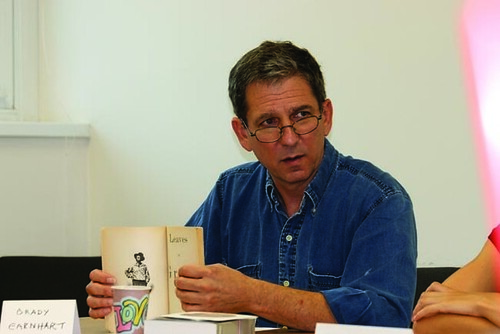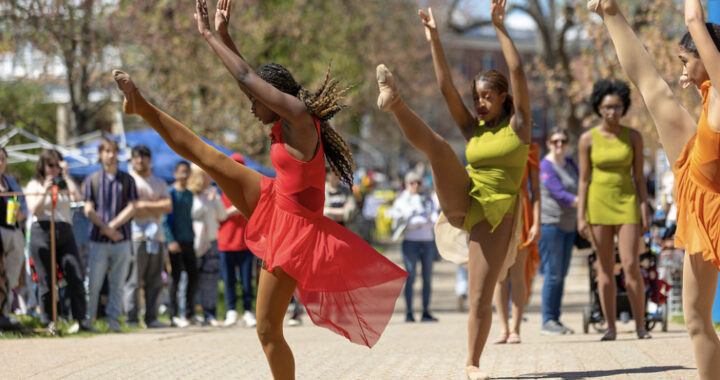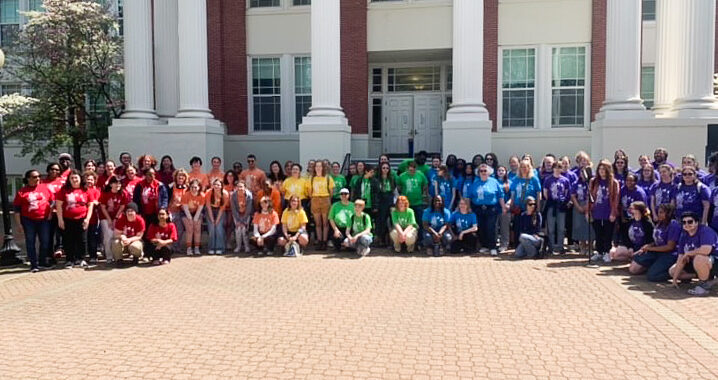Whitman goes digital
5 min readBy Megan Eichenberg
 As the first week of classes kicked off last week, Jim Groom, instructional technology specialist and adjunct professor, used the social networking service Twitter to invite the public to give a shout out to the English, linguistics, and communication department’s new English course, Digital Whitman.
As the first week of classes kicked off last week, Jim Groom, instructional technology specialist and adjunct professor, used the social networking service Twitter to invite the public to give a shout out to the English, linguistics, and communication department’s new English course, Digital Whitman.
Over the course of an hour, followers hailing from Sydney, Australia to Waco, Texas tweeted 140 characters or less lines of greetings and Walt Whitman prose in support of the course, which is one-fourth the result of a $25,000 National Endowment for the Humanities grant.
The multi-university project, titled, “Looking for Whitman: The Poetry of Place in the Life and Work of Walt Whitman,” originated from Matthew Gold, assistant professor of English at the University of New York City College of Technology.
Groom along with Mara Scanlon, associate professor of English, Brady Earnhart, visiting assistant professor of American literature and creative writing co-teach the Digital Whitman course at Mary Washington.
In addition to Mary Washington and the New York City College of Technology, New Jersey’s Rutgers University at Camden and Serbia’s University of Novi Sad are also participating in the project with similar courses designed around studying the American poet in relation to geographical place.
Scanlon said Gold approached Mary Washington to participate in the project because of the course’s emphasis on geographical areas that were important to Whitman during his lifetime.
“It’s the most exciting course I’ve ever taught as far as the design of the course itself,” Earnhart said.
According to Scanlon, the Mary Washington class, capped at 15 students, has three elements, consisting of Whitman and his work, digital technology, and geography.
At Mary Washington, students will travel to four local sites, including the Fredericksburg Civil War battlefields where Whitman’s brother was wounded and Chatham Manor, where Whitman was inspired to be a nurse after assisting injured soldiers.
Class members will also visit the nation’s capital for a Whitman’s wartime Washington walking tour and a private viewing of Whitman’s archives at the Library of Congress.
Scanlon said the Mary Washington course will particularly focus on Whitman’s Civil War years while the New York City College of Technology will focus on Whitman’s youth. Rutgers University at Camden will examine the poet’s later life and the University of Novi Sad will give the “Leaves of Grass” author an international focus.
Earnhart said structuring the course around Whitman works well because students will make connections with other students similar to the way Whitman makes connections with his readers.
Students at each of the four schools will share their responses to Whitman’s poetry, geographic experiences relating to the poet, photography, videos, and reflections through lookingforwhitman.org, designed by Groom, the project’s technical liaison.
The website is based off of wordpress, the multi-user publishing platform used to run UMW blogs.
Students can post their coursework to their own personal blogs while simultaneously publishing their assignments to the collective course blog.
That way, the shared projects can be seen at all campuses, Groom said, allowing each participant to expose work across all four schools.
Groom, who said he was “blown away” by Whitman when he originally discovered the poet in his freshman American literature class at George Mason University, says the course will also make use of digital technology such as flipcams, Flickr, Youtube, Wikis, and Twitter.
“The thing that gets lost online is banter,” Groom said, adding that the use of Twitter in addition to the blogs allows for banter and community to blur and build additional academic space.
“Twitter is another way of managing a distributed conversation,” Groom said.
Groom explained the blog is more formal, where more academic work may happen, while Twitter enables others outside of the class to comment, learn and be involved with the project.
Scanlon said it will be interesting to see how the class’s relationship with Whitman evolves based on the use of digital technology.
Students at each university will be required to post on the course blog, comment on other participant’s blog posts, including posts made by students at other universities, annotate different editions of “Leaves of Grass,” and work on other projects relating to Whitman in a geographical context.
In November, students at each university will use flipcams to record and post a video about their own relationship with Whitman by reading an excerpt of Whitman’s work in the place where the student discovered Whitman.
The “My Walt Whitman” assignment, Scanlon explained, is not just about place, but about time as well, and how students perceive the poet in 2009 in a specific place, such as Fredericksburg.
Earnhart said that by taking the course, students have the opportunity to obtain a deep knowledge of Whitman through the use of technology.
“Whitman himself was on the cutting edge of technology during his time,” Earnhart said, likening Whitman to someone today involved with computer programming by citing the poet’s use of the printing press to set his own print.
Junior Erin Longbottom, an English major, decided to register for the class after hearing classmates talking about the course and reading the course description.
“Everything about the class was totally different from anything I’d done as an undergraduate so far,” she said, adding, “I felt like if I didn’t take this class I’d be missing something really cool.”
Longbottom began reading Whitman’s poetry when she was younger, after watching the movie Dead Poet’s Society, which references the poet.
Besides a desire to learn more about Whitman, the course’s emphasis on technology appealed to Longbottom.
“I have an active interest in sharing technology on the internet…so combining the study of a classic American poet with blogging and other technology was something too good to pass up for me,” she said.
Longbottom said using digital technology, such as Twitter and blogs, will allow for a free flow of ideas among students and professors while also putting the course on a global scale, because it enables anyone to see what the class is doing and thinking relating to the Whitman project.
“I think Twitter is going to be a really good tool as far as that goes, because so many people can quickly reply to something we post there. It’s a moment by moment account of what we’re experiencing, and especially when we go on field trips and work on projects, it’s going to be interesting to see a play by play of what everyone is thinking and feeling as we go through the class,” she said.
Scanlon said Gold applied for an initial grant in 2007 to fund planning the course, while the most recent grant awarded was used for additional funding for activities, such as the course fieldtrips.
Faculty members from each university met in the months leading up to the course launch and took part in a round table discussion at a Modern Language Association convention to discuss the grant and plan course details.
Next spring, Scanlon said the four universities participating in the project hope a student conference can be held where all the class participants can meet each other and further discuss the courses and Whitman and his poetry in relation to geographical place.











